<Back to Index>
- Mexican Revolutionary Pascual Orozco Vazquez, 1882
- Governor of Chihuahua Abraham González Casavantes, 1864
PAGE SPONSOR
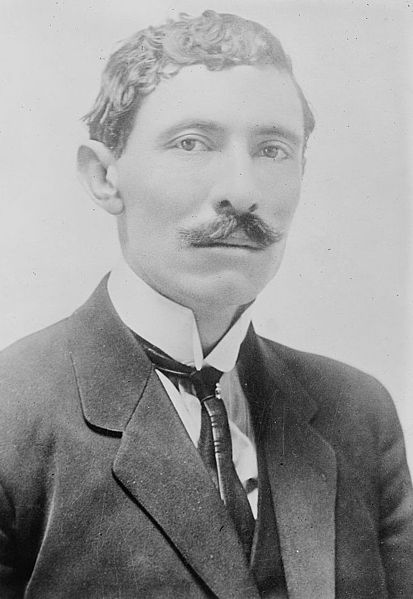
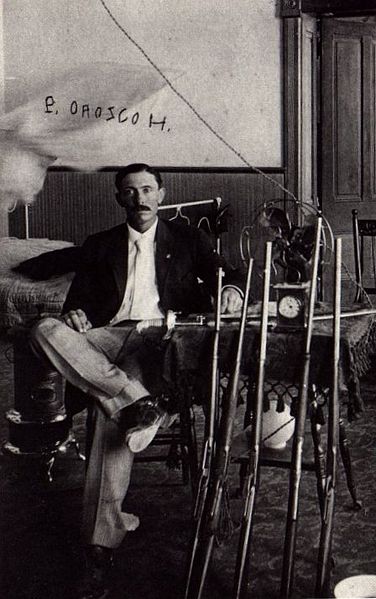
Pascual Orozco Vazquez (in contemporary documents, sometimes spelled "Oroszco") (28 January 1882 - 30 August 1915) was a Mexican revolutionary leader who, after the triumph of the Mexican Revolution, rose up against Francisco I. Madero and recognized the coup d'état led by Victoriano Huerta and the government it imposed.
Orozco was born to a middle class family on Santa Ines hacienda near San Isidro, Guerrero, in the state of Chihuahua. He worked as a muleteer and store keeper before he became wealthy from an investment in a gold mine.
His father was Pascual Orozco Sr. His mother was Amada Orozco y Vázquez (1852 - 1948). The Vázquez family were second generation Basque immigrants. Pascual Jr. married Refugio Frías, and dedicated his youth to the transport of precious metals between the mining firms of the state. This allowed him to buy his own gold mine. Also he was uncle of Maximiano Márquez Orozco, who participated in the Mexican Revolution as Coronel of the Villista Army. In the first years of the 20th century he was attracted by the ideas of the Flores Magón brothers and, in 1909, he started importing weaponry from the United States in the face of the imminent outbreak of the Mexican Revolution.
He objected to the Porfirio Díaz dictatorship, and first ran into trouble with the law when caught with anti - Díaz literature in 1906. In May 1909 Orozco and José Inés Salazar purchased weapons in the United States and took them to Mexico on behalf of the Flores Magon brothers.
When Francisco I. Madero called for an uprising against Díaz in 1910, Orozco was an enthusiastic supporter and, on 31 October of that year, was placed in command of the revolutionary forces in Guerrero municipality. He led his forces to a series of victories against Díaz loyalists, and by the end of the year most of the state was in the hands of the revolutionaries. At this point, Orozco was a hero in Chihuahua, with over 30,000 people lining the streets upon his return. Madero promoted him to colonel, and in March 1911 to brigadier general, remarkably, these promotions were earned without any kind of military knowledge or military training. On 10 May of that year Orozco and his subordinate colonel Pancho Villa seized Ciudad Juárez, which Madero made the capital of his new provisional government.
On 31 October 1910 he was named jefe revolucionario (revolutionary leader) of the Benito Juárez Anti Re-election Club in Guerrero District. A week after the beginning of the war, he obtained his first victory, against General Juan Navarro. After ambushing the federal troops in Cañón del Mal Paso on 2 January 1911, he ordered the dead soldiers stripped and sent the uniforms to Presidente Díaz with a note that read, "Ahí te van las hojas, mándame más tamales". ("Here are the wrappers, send me more tamales.") His bellicose attitude helped him ascend in ranks rather quickly within the maderista troops. He was eventually made general, having Francisco Villa among his subordinates. After the seizure of Ciudad Juárez, Madero designated his first provisional cabinet, having Venustiano Carranza, a wealthy landowner like Madero, in the Ministerio de Guerra (War Ministry), a position that Orozco longed for. Venustiano Carranza would eventually become a President of Mexico. Orozco and Villa first confronted Madero by bursting into a meeting of his shadow cabinet after the first Battle of Juarez.
After Díaz's fall, Orozco became resentful at Madero's failure to name him to the cabinet or a state governorship. Orozco was particularly upset with Madero's failure to create a series of social reforms that he promised at the beginning of the revolution. Orozco believed that Madero was very similar to Diaz whom he helped overthrow. When Madero asked him to lead troops against the forces of Emiliano Zapata, Orozco refused and offered his resignation, which Madero did not accept. Orozco was then offered the governorship of Chihuahua, which he refused, and Madero finally accepted his resignation from the federal government.
When Díaz presented his resignation, Orozco was named commander of the federal rural police (Los Rurales) in Chihuahua. In June 1911, Orozco decided to run for governor of Chihuahua for the Club Independiente Chihuahuense, an organization opposed to Francisco I. Madero. After receiving many admonitions by the revolutionary hierarchy, he was compelled to resign his candidature on 15 July 1911. Subsequently he refused a request to command the troops fighting Emiliano Zapata in the south. On 3 March 1912, he announced his intention to revolt against the government of President Madero. Orozco financed his rebellion with his own assets and with confiscated livestock, which he sold in the neighboring state of Texas, and where he bought weapons and ammunition even after an embargo proclaimed by U.S. president William Taft in March 1912.
On 3 March 1912 Orozco decreed a formal revolt against Madero's government. Orozco's forces known as the Orozquistas and Colorados (Red Flaggers) smashed Madero's army during several engagements. Seeing the potential danger that Orozco posed to his regime, Madero sent general Victoriano Huerta out of retirement to stop Orozco's Rebellion, which Huerta accomplished by August partially because Orozco was not able to acquire adequate supplies to defeat him. Orozco took refuge in the United States.
Madero ordered Victoriano Huerta to fight the rebellion. Huerta's troops defeated the orozquistas in Conejos, Rellano and Bachimba finally seizing Ciudad Juárez. After being wounded in Ojinaga, Orozco was forced to flee to the United States. After living for some months in Los Angeles, with his first cousin, Teodora Vazquez Molinar' Gonzalez (1879 - 1956) and husband, Carlos Diaz - Ferrales Gonzalez (1878 - 1953) he was able to return to Chihuahua but extremely ill, affected with periodic rheumatism seizures.
After Huerta installed himself as President of Mexico, Orozco agreed to support him if Huerta agreed to some reforms (such as payment of hacienda workers in hard money rather than company store scrip). Huerta agreed, and had Orozco, as Commanding General of all Mexican Federal forces, lead attacks against the revolutionaries and Pancho Villa. Orozco defeated the Constitutionalists at Ciudad Camargo, Mapula, Santa Rosalia, Zacatecas, and Torreón before Huerta was deposed.
After Huerta's fall Orozco announced his refusal to recognize the government of the new president, Francisco S. Carvajal whom he viewed to be similar to Madero. After briefly leading a revolt financed with his own money where he fought in Guanajuato where he won several successive engagements against the Constitutionalists but was forced to retreat because he lacked sufficient manpower to hold the ground he won. He was again forced into exile in the United States.
In the USA he met with Huerta in New York to make plans to retake Mexico. On 27 June 1915 the two were arrested in Newman, New Mexico, and charged with conspiracy to violate U.S. neutrality laws. He was placed under house arrest in El Paso, Texas, but managed to escape back into Mexico.
Orozco managed to escape and on his way back to Mexico, he was ultimately killed in Texas on 30 August 1915. The official U.S. report stated that Orozco and his men had crossed by Dick Love's ranch and had coerced the cook to prepare them a meal and attend their horses, while Orozco and his men were planning to steal Love's cattle. When the owner arrived, they fled on the rancher's horses. The facts of this are often disputed because in other accounts it is believed that the horses belonged to Orozco and Love set up Orozco to seek revenge for an earlier dispute. Love used his accusations to persuade 26 members from the Thirteenth U.S. cavalry, 8 local deputies and 13 Texas Rangers to pursue the mysterious horse thieves whom he purposefully fails to mention by name to ensure their participation. The posse in pursuit of Orozco's group caught up with them on Van Horn Mountain, eight miles (15 km) south of Lobo, Texas. There was a gunfight, and Orozco was killed, along with all of his men. A Mexican version asserts that Orozco was murdered trying to resist the robbery of his own horses by Love and his men. On 7 October a local hearing against the 40-plus Americans involved was initiated, but the court found the people involved innocent of all charges.
On 3 September 1915 Orozco's remains were buried in El Paso, Texas, at the decision of his wife in Concordia Cemetery, dressed in a full Mexican general's uniform, with the Mexican flag draping his coffin, in front of three thousand followers and admirers. In 1923, his remains were returned to his home state of Chihuahua.
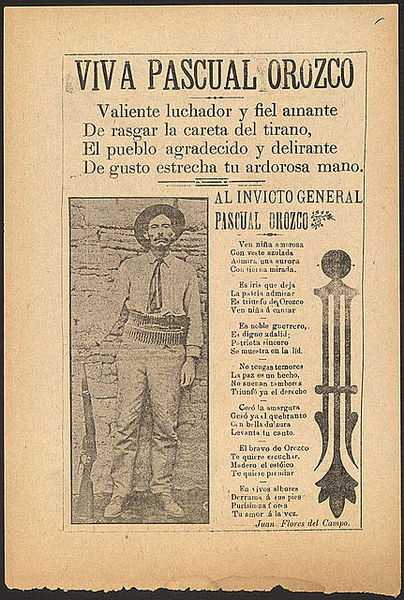
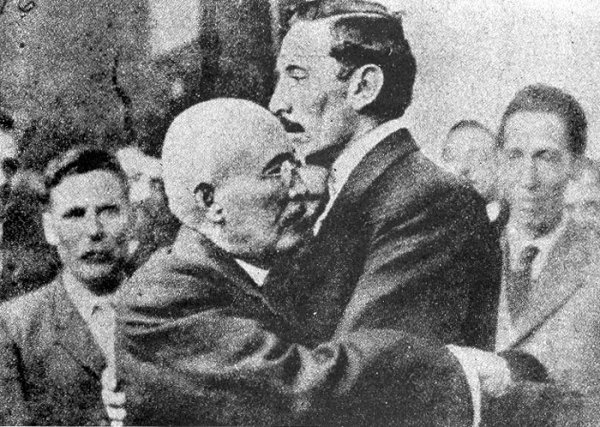
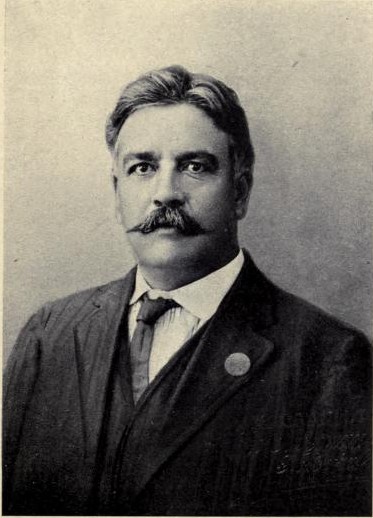
Abraham González Casavantes (June 7, 1864 - March 7, 1913) was the provisional and constitutional governor of the Mexican state of Chihuahua during the early period of the Mexican Revolution. He was the political mentor to the revolutionary Pancho Villa, whom he had met and befriended before the revolution.
González was born on his family's estates in Basúchil, in Guerrero Municipality, Chihuahua. He was a member of one of the richest and best educated families in the state (the González family was believed to be descended from European nobility). He was educated at the University of Notre Dame, in Notre Dame, Indiana.
He was one of the main leaders of the Maderista Junta Revolucionaria Mexicana, the movement which opposed the re-election of dictator Porfirio Díaz in 1910.
During the early phases of the Revolution, González was appointed provisional governor of the State of Chihuahua on October 1910 by Francisco Madero. After the success of the Madero revolution, González was appointed interim governor in June 1911 pending elections. He was elected governor in his own right in August 1911.
In October 1911, González obtained a leave of absence, approved by the Chihuahua legislature, from the office of governor so that he could serve on Madero’s cabinet in Mexico City. On November 6, 1911 he was sworn in as the Minister of Internal Affairs (Secretaría de Gobernación). He served in this capacity until February 1912, when he returned to Chihuahua and served as governor of the state until his death.
After the assassination of President Francisco I. Madero and Vice President José María Pino during La decena trágica, he was forced to resign from his post as governor and arrested on February 25, 1913, on orders of General Antonio Rábago, a subordinate of the dictator Victoriano Huerta. During his incarceration, he was held in the same complex in the Federal Palace of Chihuahua that had housed Miguel Hidalgo y Costilla prior to his execution a century before, during the war for Mexico's independence. On 7 March, he was taken aboard a train on the pretense of being transferred to Mexico City, but was then removed from the train and murdered in Bachimba Canyon, about 40 miles (65 km) south of Chihuahua, Chihuahua on direct orders from Huerta., who had been responsible for ordering the murders of Madero and Pino Suárez in order to assume power.
His nephew, Colonel Fernando González y González and Pancho Villa later recovered González's remains and gave him a hero's funeral in the city of Chihuahua. He is buried in the Rotunda of Illustrious Chihuahuans under the Angel of Liberty monument in the Plaza Mayor in Chihuahua City.